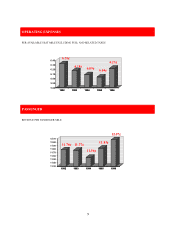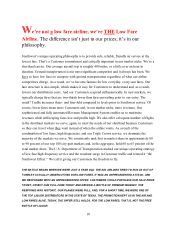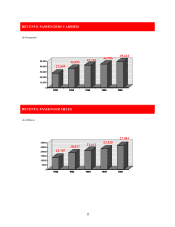Southwest Airlines 1996 Annual Report Download - page 18
Download and view the complete annual report
Please find page 18 of the 1996 Southwest Airlines annual report below. You can navigate through the pages in the report by either clicking on the pages listed below, or by using the keyword search tool below to find specific information within the annual report.18
Our “continuous maintenance” is the safest in the sky.
After all, our families and friends fly Southwest, too.
Since safety is the single most important priority at Southwest, we have rigid standards for
aircraft maintenance and flight operations. Our aircraft are inspected on a weekly basis and
undergo frequent, rigorous routine maintenance checks. In addition, airframes and engines are
inspected and repaired when specified by the manufacturers. Our top-notch, highly skilled
maintenance team and proven maintenance philosophy greatly contribute to our outstanding 25-
year safety record. We also believe our highly skilled and trained pilots are the best in the
industry. We are the only airline in the U.S. that requires first officers to be FAA captain-rated
for Boeing 737 aircraft. Our new first officers are also required to have 1,000 hours minimum as
pilot in command of jet/turbine-powered aircraft. It’s like having two experienced captains in the
cockpit. Our commitment to one aircraft also contributes to our superb safety record and our
low cost structure. At December 31, 1996, we had 243 Boeing 737 aircraft in our fleet, the
largest Boeing 737 fleet in the world, consisting of 171 -300s, 25 -500s, and 47 -200s. We
owned 124 of the 243 aircraft in our fleet. Of the remaining 119 aircraft, 93 were operated
pursuant to long-term leases with various renewal and purchase options at the end of the lease
periods and 26 of the -200s were under short-term leases expiring over the next several years.
Our philosophy is to operate a modern, young fleet of aircraft. The average age of our fleet at
the end of 1996, 7.9 years, was and is consistently among the youngest in the U.S. airline
industry. At yearend 1996, 81 percent of our fleet had the quieter, more fuel efficient Stage 3
engines. We recently announced our order for 20 hushkits (and 14 options) to upgrade some of
our newer -200 aircraft to comply with the more stringent Stage 3 noise standards. All -200s not
equipped with hushkits before the end of 1999 will be retired. Flying only 737s greatly simplifies
our scheduling, maintenance, flight operations, and training requirements. As a consequence,
flight crews, airport employees, dispatchers, and mechanics can devote their time and energy
completely to mastering just one aircraft type. Not only is it easier for Southwest to substitute
aircraft, reschedule flight crews, and transfer mechanics quickly and efficiently, we believe it
contributes to the overall safety of each flight. In fourth quarter 1997, we will be the first airline
to receive the new -700 model, which is a superb extension of the 737 family. As the launch
customer, our agreement with Boeing allows for comparatively lower capital costs, and the -700
is expected to be quieter, more fuel-efficient, and more easily maintainable than its -300
counterpart. The new aircraft model will have the capability to fly faster, farther, and higher, and
should carry the same type rating as the rest of the 737 family.
























